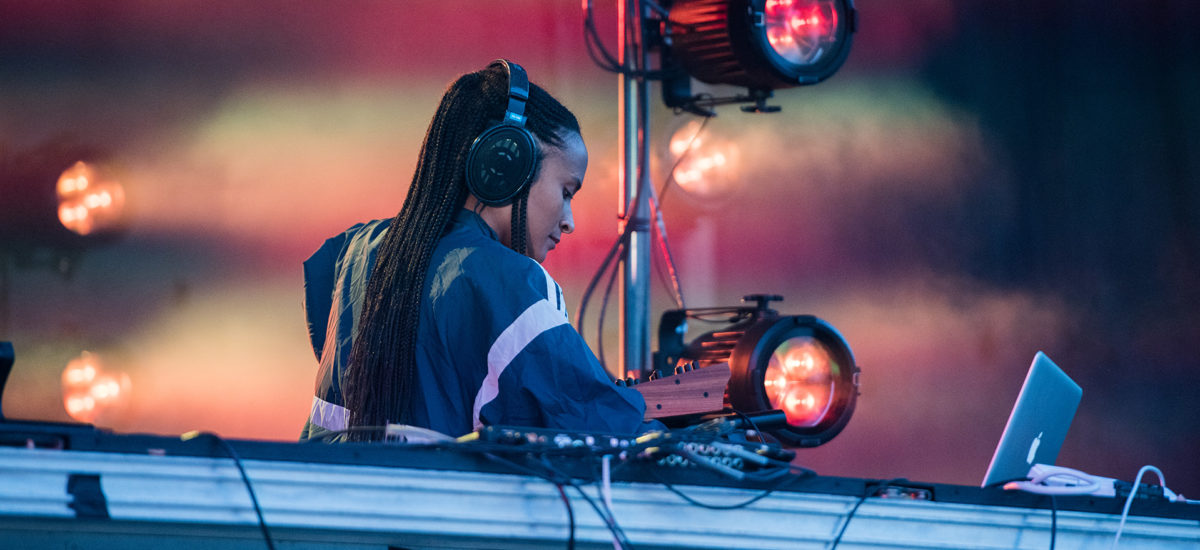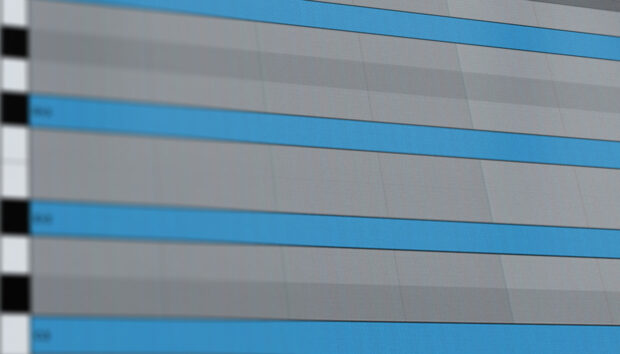
Parisian born, Montreal based producer Ouri is grabbing the attention of electronic music fans across the globe with her unique ambient and melancholic music. Having released her new album Superficial this year and gracing the stages of Mutek in August, Ouri took time out of her busy schedule to sit down with Native Instruments and discuss her approach to production, how she’s utilizing FM8 and transferring all of this to the stage for her live performances.
Can you talk a bit about your live setups and how they differ from your studio practise?
I’m trying to keep everything I’m using in the studio on stage, to keep the ‘laboratory’ vibe of making music. I’m just adding a controller (as a mixer mapped to my Ableton session) and a sample pad. Even if the computer is the crossroad between all elements, I’m trying to look at it as little-as-possible during the shows.
How do you adjust your show when you DJ versus doing a live show?
For a live performance I’ll just use my own music to build a discourse, and guide people through my sonic universe. I’ll leave a lot more space and adjust the rhythm of the live show depending on the crowd. When I’m DJing, I’m playing everything that inspires me, without having genre/style boundaries. I’ll just improvise with all the music that I’ve bought recently and play some of my own productions, using Traktor or CDJs. My DJ practice is a lot more free and unprepared than the live shows right now.
What instrument or effects do you use the most? For instance in “No Fight”, what sounds and processes went into making the track?
I’m using mostly FM8, Massive, and Kontakt. I think they are the best tools to create hybrid sounds; I’ll layer them to reach some kind of augmented reality. In ‘No Fight’, I used FM8 to create a bright layer of sequenced chords -the 808 tom sound precisely – and I use the Kontakt strings to bring some real timbres. It’s nice to have something that people can relate to, and not just abstract sounds. Massive is my favorite VST for analog synthesis; so many waveforms, and envelopes available. In “No Fight” I used it for the powerful chord progression, the beginning ostinato sounds and the deep bass.
How do you treat / process vocals?
There are two paths to me. I either want a very dry, close and intimate feeling or something that is dreamy, super alive, with echo – which I will use for sample-based instruments or granular synthesis. I’ll just listen to all the takes and chop hundreds of short samples; I’ll listen to them in various presets, loop them and create layers with it eventually. I want voices to flow on top of everything, but also to move in the soundscape. I’ll play with the voice in the fictional space I created for them; put them close, then far.
How do you normally start a track?
Sometimes I start a track with a basic chord or melodic progression; or it it’s a static harmony, I’ll jam the sound until I have 5-6 min with enough movements and progression in it. Then comes rhythm, through ostinatos, melodies or simply drums. But I also do the opposite and start with drums.

How much has software replaced your hardware setup on stage?
I would say it’s 50/50, I have two hardware synths but also have virtual synths that I’ll be using. I want to allow myself to take the best of both worlds for now. Even if a computer can take a lot of place on stage, a hybrid setup brings a balance between programmed stuff and improvisation.
How much room do you leave for “performance error” on stage or do you want it to sound exactly like the recordings?
Ideally I want to reproduce the recordings but it cannot be exactly the same, some sounds are almost totally different, some movements or progression are longer. In my live setup, I definitely have some room for performance error.
You’ve previously released remixes alongside your original compositions. How do you approach them differently from a creative standpoint?
For remixes, I’ll consider the genre, the vibe of the original song, take a part of it and amplify it considerably. It could be by determining the abstract direction or just one sound that I’ll isolate and put in the foreground. Some do remixes with no link to the original but that’s not my path.
You collaborate with several artists within the Montreal scene. How have you noticed the producer scene changing within the city?
Montreal is a very special place for artists. It allows a lot of diversity and experimentations; there is definitely a growing excitement about electronic music, it’s growing and it’s super opened. There are more exciting names coming to emerge from Montreal.
photo credits: Trung Dung Nguyen















